The Western Retail Lumber Association has named Murray Finkbiner as the 2023 Industry Achievement Award recipient. This award recognizes someone who has contributed to their business, the building supply industry, the WRLA, and the communities in which they live. Finkbiner has been an active member of the building supply industry since he began working at his father’s lumber yard 51 years ago. After working his way up to becoming the manager of Northwood Building Materials in Calgary, he joined AFA Forest Products in 1988. In 2014, he took over as president and COO, and led the company until its acquisition by Gillfor Distribution in 2022. Finkbiner remained with Gillfor as a senior advisor until his retirement in June of this year.



 North Vancouver – The Independent Wood Processors Association of British Columbia (IWPA) welcomes the BC government’s amendments to the Manufactured Forest Products Regulations further restricting raw lumber exports throughout British Columbia creating more opportunities for manufacturing higher value wood products and keeping more jobs in BC. “Restricting the export of large cedar and cypress raw lumber will provide more opportunities for BC manufacturers to make higher value wood products from these valuable and renewable wood species, while ultimately retaining more jobs for British Columbians,” said Andy Reilly, chair of the IWPA, and co-chair of the BC Value-Added Wood Coalition. “I want to thank the BC Government for working with the IWPA, along with other manufacturers, and listening to our recommendations to further restrict raw lumber exports across all of BC’s international border.”
North Vancouver – The Independent Wood Processors Association of British Columbia (IWPA) welcomes the BC government’s amendments to the Manufactured Forest Products Regulations further restricting raw lumber exports throughout British Columbia creating more opportunities for manufacturing higher value wood products and keeping more jobs in BC. “Restricting the export of large cedar and cypress raw lumber will provide more opportunities for BC manufacturers to make higher value wood products from these valuable and renewable wood species, while ultimately retaining more jobs for British Columbians,” said Andy Reilly, chair of the IWPA, and co-chair of the BC Value-Added Wood Coalition. “I want to thank the BC Government for working with the IWPA, along with other manufacturers, and listening to our recommendations to further restrict raw lumber exports across all of BC’s international border.”
 FORT ST. JOHN, BC — The Fort St. John Sawmill is one of multiple facilities across British Columbia and Alberta that will be affected by Canfor’s curtailments in December. According to Canfor, all its lumber mills in B.C. and Alberta will pause operations for three non-statutory days during the holiday week between Christmas and New Year’s due to the ongoing weak market conditions and the lack of available fibre. Three of Canfor’s manufacturing facilities, including the one in Fort St. John, will take an additional week of downtime in advance of Christmas. Canfor says wood product sales are linked heavily to residential construction, and it is currently a seasonally slow period for lumber demand. The low demand, current inflation pressure and high mortgage interest rates affect home builders’ demand for lumber.
FORT ST. JOHN, BC — The Fort St. John Sawmill is one of multiple facilities across British Columbia and Alberta that will be affected by Canfor’s curtailments in December. According to Canfor, all its lumber mills in B.C. and Alberta will pause operations for three non-statutory days during the holiday week between Christmas and New Year’s due to the ongoing weak market conditions and the lack of available fibre. Three of Canfor’s manufacturing facilities, including the one in Fort St. John, will take an additional week of downtime in advance of Christmas. Canfor says wood product sales are linked heavily to residential construction, and it is currently a seasonally slow period for lumber demand. The low demand, current inflation pressure and high mortgage interest rates affect home builders’ demand for lumber.


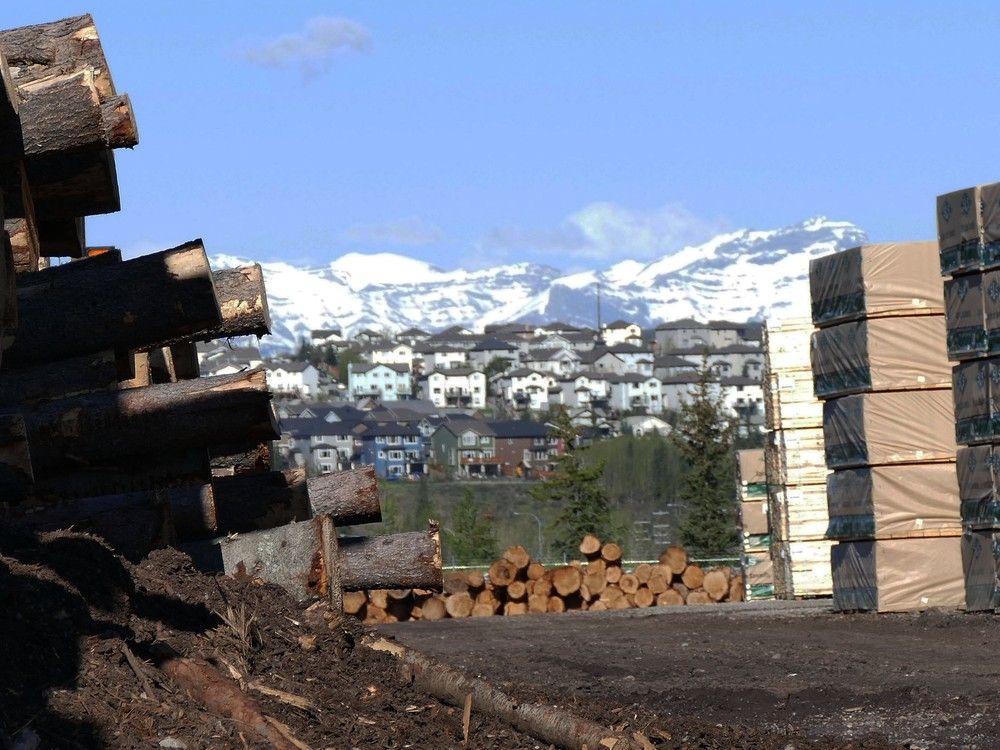
 The Government of BC is contributing as much as $6.49 million through the BC Manufacturing Jobs Fund to fund three capital projects and three planning projects. The projects will see wood-product manufacturers grow and diversify their operations by upgrading equipment to support innovation and long-term sustainability, adding new product lines and establishing new jobs while preserving existing positions.
The Government of BC is contributing as much as $6.49 million through the BC Manufacturing Jobs Fund to fund three capital projects and three planning projects. The projects will see wood-product manufacturers grow and diversify their operations by upgrading equipment to support innovation and long-term sustainability, adding new product lines and establishing new jobs while preserving existing positions.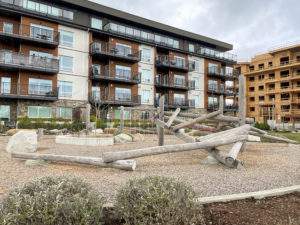 B.C. Premier David Eby has announced a road map for how the province can deliver 250,000 more homes in the next decade, including through sweeping changes in zoning bylaws that municipalities must pass in the new year. EBY… said the Housing Ministry convened a panel of economists to do modelling… showing how a quarter million new homes can be built across B.C. in the next 10 years. By analyzing examples from places like New Zealand and Washington state that have recently introduced zoning changes along the same lines as B.C.’s proposal, the panel found anywhere from 216,000 to 293,000 net new housing units could be built in B.C. by 2034. …The government will look to update zoning bylaws allowing either a minimum of one secondary suite or detached unit, a minimum of three to four dwelling units, or a minimum of six dwelling units in selected areas near bus stops with frequent transit service.
B.C. Premier David Eby has announced a road map for how the province can deliver 250,000 more homes in the next decade, including through sweeping changes in zoning bylaws that municipalities must pass in the new year. EBY… said the Housing Ministry convened a panel of economists to do modelling… showing how a quarter million new homes can be built across B.C. in the next 10 years. By analyzing examples from places like New Zealand and Washington state that have recently introduced zoning changes along the same lines as B.C.’s proposal, the panel found anywhere from 216,000 to 293,000 net new housing units could be built in B.C. by 2034. …The government will look to update zoning bylaws allowing either a minimum of one secondary suite or detached unit, a minimum of three to four dwelling units, or a minimum of six dwelling units in selected areas near bus stops with frequent transit service.

 In July 2023, B.C. announced the Single-Use and Plastic Waste Prevention Regulation, which will limit the use of plastic shopping bags, disposable food service accessories, oxo-degradable plastics, and food-service packaging made of polystyrene foam, PVC, PVDC, compostable and biodegradable plastics. …The government has adjusted the rollout of some items under B.C.’s regulation until July 15, 2024. This will mean no plastic shopping bags at checkouts, a small fee for paper and reusable bags and fewer plastics. When more time is needed to source alternatives for some products, such as PVC film wrap and polystyrene foam trays used for meat, poultry and seafood, additional time will be allowed before they are prohibited. Click here for more information and
In July 2023, B.C. announced the Single-Use and Plastic Waste Prevention Regulation, which will limit the use of plastic shopping bags, disposable food service accessories, oxo-degradable plastics, and food-service packaging made of polystyrene foam, PVC, PVDC, compostable and biodegradable plastics. …The government has adjusted the rollout of some items under B.C.’s regulation until July 15, 2024. This will mean no plastic shopping bags at checkouts, a small fee for paper and reusable bags and fewer plastics. When more time is needed to source alternatives for some products, such as PVC film wrap and polystyrene foam trays used for meat, poultry and seafood, additional time will be allowed before they are prohibited. Click here for more information and 

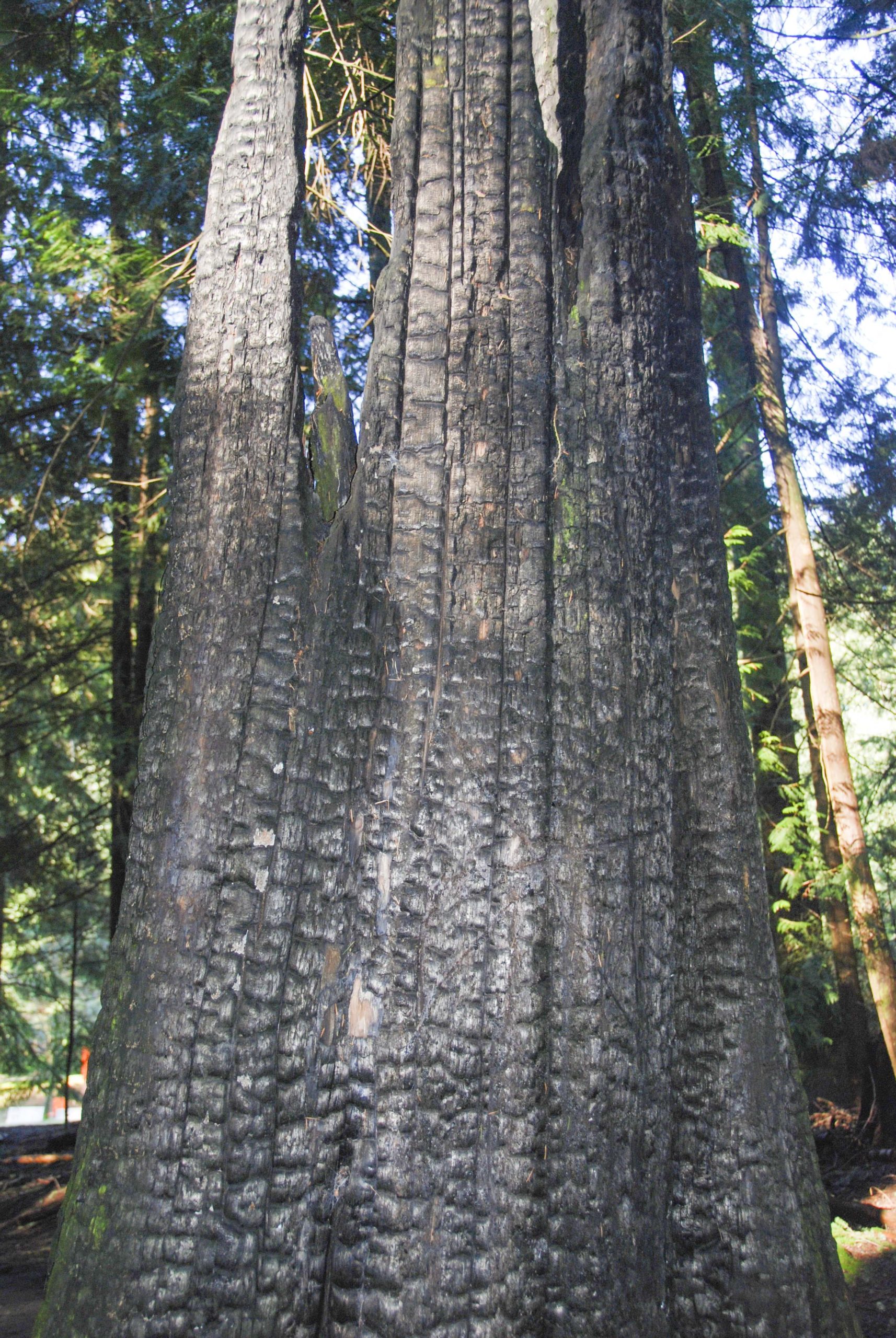 The wildfires may be out – but they still pose a threat to those venturing into the backcountry. The BC Forest Safety Council warns that summer wildfires and ongoing drought conditions are creating potentially dangerous situations. Many parts of the province are experiencing severe drought and impacts from a catastrophic fire season. In particular, the northeast part of the province remains under Level 5 drought conditions. The region experienced several very large wildfires, including the 619,000-hectare Donnie Creek fire. During the winter, some wildfires will continue to smoulder and burn under the snow, which will create new and hidden hazards, some of which may not be obvious, the safety council says.
The wildfires may be out – but they still pose a threat to those venturing into the backcountry. The BC Forest Safety Council warns that summer wildfires and ongoing drought conditions are creating potentially dangerous situations. Many parts of the province are experiencing severe drought and impacts from a catastrophic fire season. In particular, the northeast part of the province remains under Level 5 drought conditions. The region experienced several very large wildfires, including the 619,000-hectare Donnie Creek fire. During the winter, some wildfires will continue to smoulder and burn under the snow, which will create new and hidden hazards, some of which may not be obvious, the safety council says.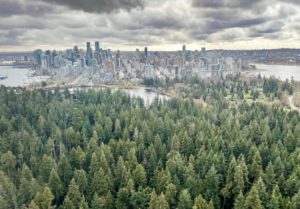 VANCOUVER, BC — For the time being, the Vancouver Board of Parks and Recreation is refusing to release the expert report behind the operation to cut down almost a quarter of the trees in Stanley Park. At the end of November, the Vancouver Park Board announced scheduled closures of the Lions Gate Bridge, Stanley Park Causeway, and other roads and trails over the next two months while it removes 160,000 trees due to pest infestation and wildfire fears. …“The primary focus is to prioritize the removal of trees affected by the hemlock looper moth infestation in heavily visited areas of Stanley Park, in alignment with preparations for winter storms, wildfires and bird nesting season,” said Park Board spokeswoman Eva Cook. Cook said B.A. Blackwell & Associates is the forestry consultant working with the board, but she refused to say how much the contract is worth.
VANCOUVER, BC — For the time being, the Vancouver Board of Parks and Recreation is refusing to release the expert report behind the operation to cut down almost a quarter of the trees in Stanley Park. At the end of November, the Vancouver Park Board announced scheduled closures of the Lions Gate Bridge, Stanley Park Causeway, and other roads and trails over the next two months while it removes 160,000 trees due to pest infestation and wildfire fears. …“The primary focus is to prioritize the removal of trees affected by the hemlock looper moth infestation in heavily visited areas of Stanley Park, in alignment with preparations for winter storms, wildfires and bird nesting season,” said Park Board spokeswoman Eva Cook. Cook said B.A. Blackwell & Associates is the forestry consultant working with the board, but she refused to say how much the contract is worth. 
 FREE WEBINAR | Monday, December 11 | 7:00 PM PST — The Forest History Association of British Columbia Speaker Series is pleased to present our next speaker: Dr. Ira Sutherland. Sutherland is a post-doctoral researcher at Simon Fraser University. He recently obtained his RPF and finished his PhD in the UBC Department of Forest and Conservation Sciences studying historical social-ecological changes in BC forests. Forests and society are changing, but by how much? How well is forest management keeping pace? And what does this tell us about the overall sustainability of forest landscapes in BC? This talk presents insights from Sutherland’s recently published PhD dissertation, which reconstructs social-ecological changes in BC over the past century. Join us for this free webinar. Register today.
FREE WEBINAR | Monday, December 11 | 7:00 PM PST — The Forest History Association of British Columbia Speaker Series is pleased to present our next speaker: Dr. Ira Sutherland. Sutherland is a post-doctoral researcher at Simon Fraser University. He recently obtained his RPF and finished his PhD in the UBC Department of Forest and Conservation Sciences studying historical social-ecological changes in BC forests. Forests and society are changing, but by how much? How well is forest management keeping pace? And what does this tell us about the overall sustainability of forest landscapes in BC? This talk presents insights from Sutherland’s recently published PhD dissertation, which reconstructs social-ecological changes in BC over the past century. Join us for this free webinar. Register today. 
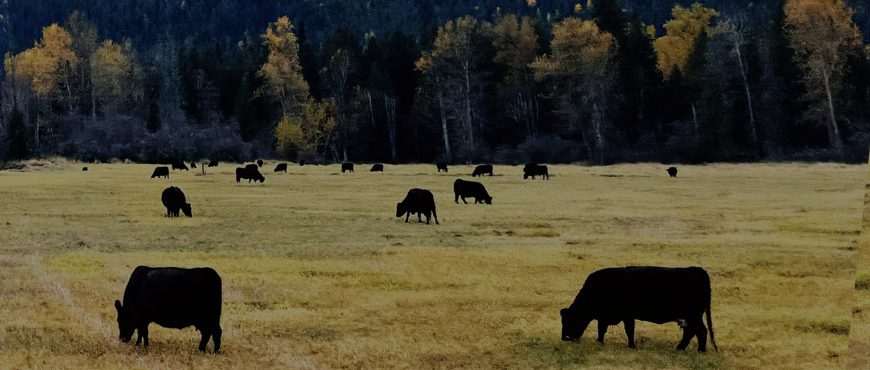
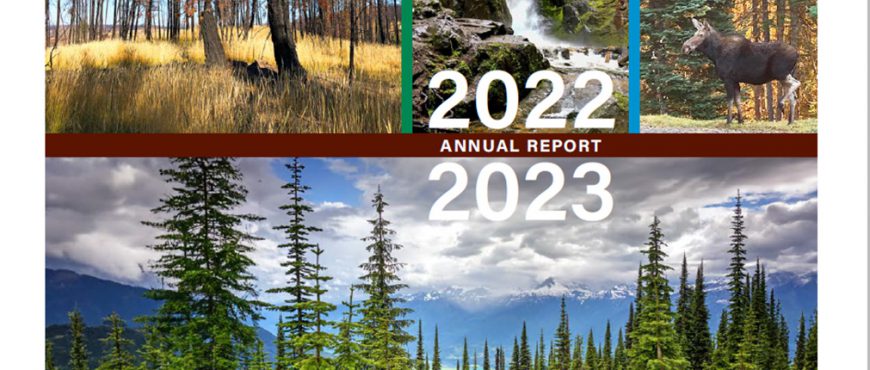
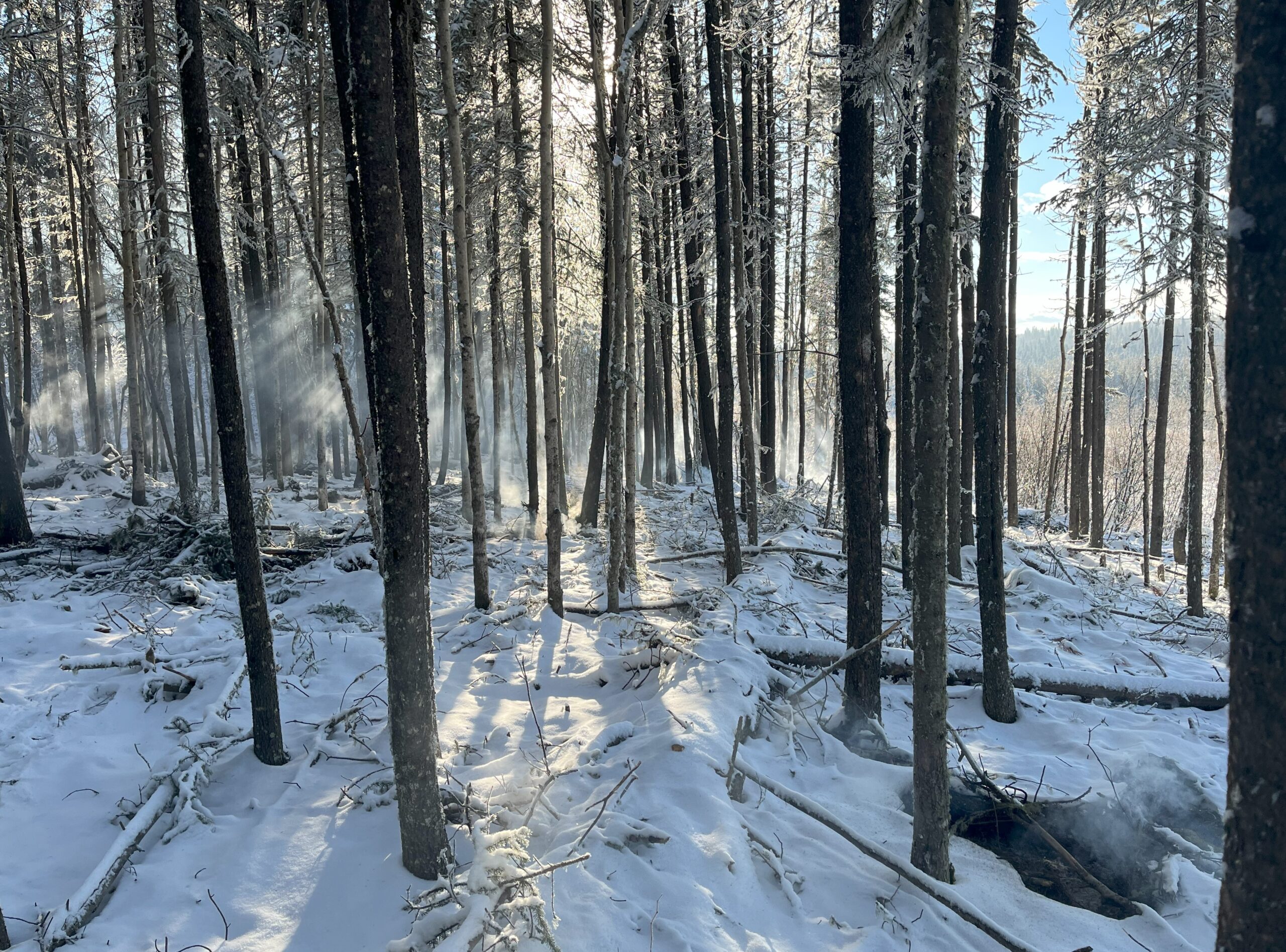
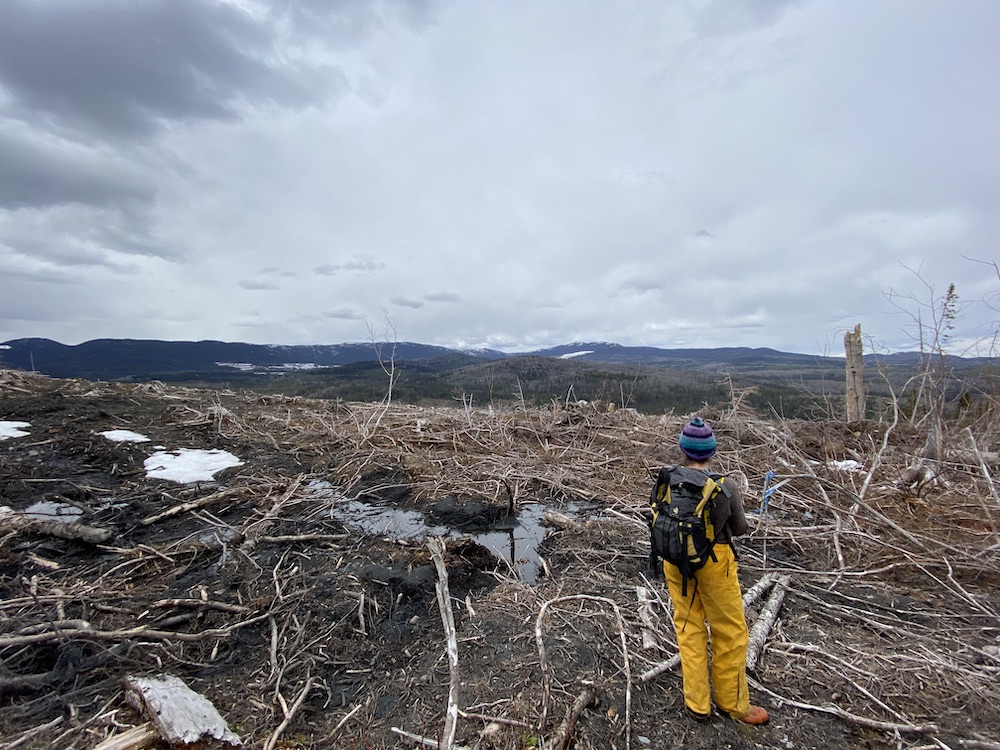
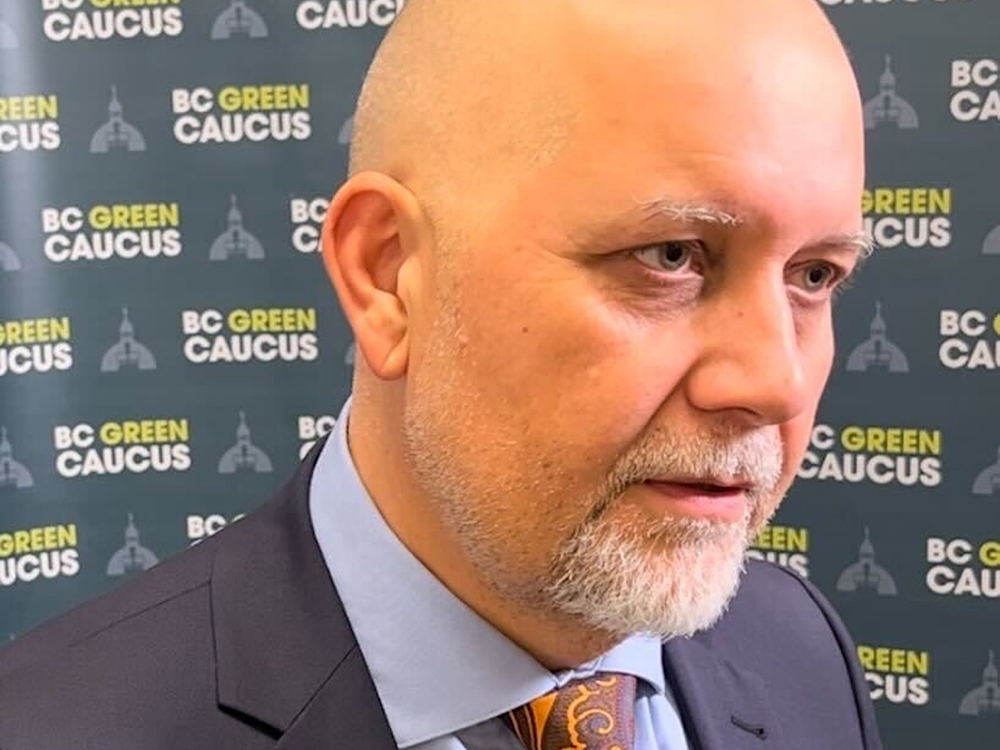

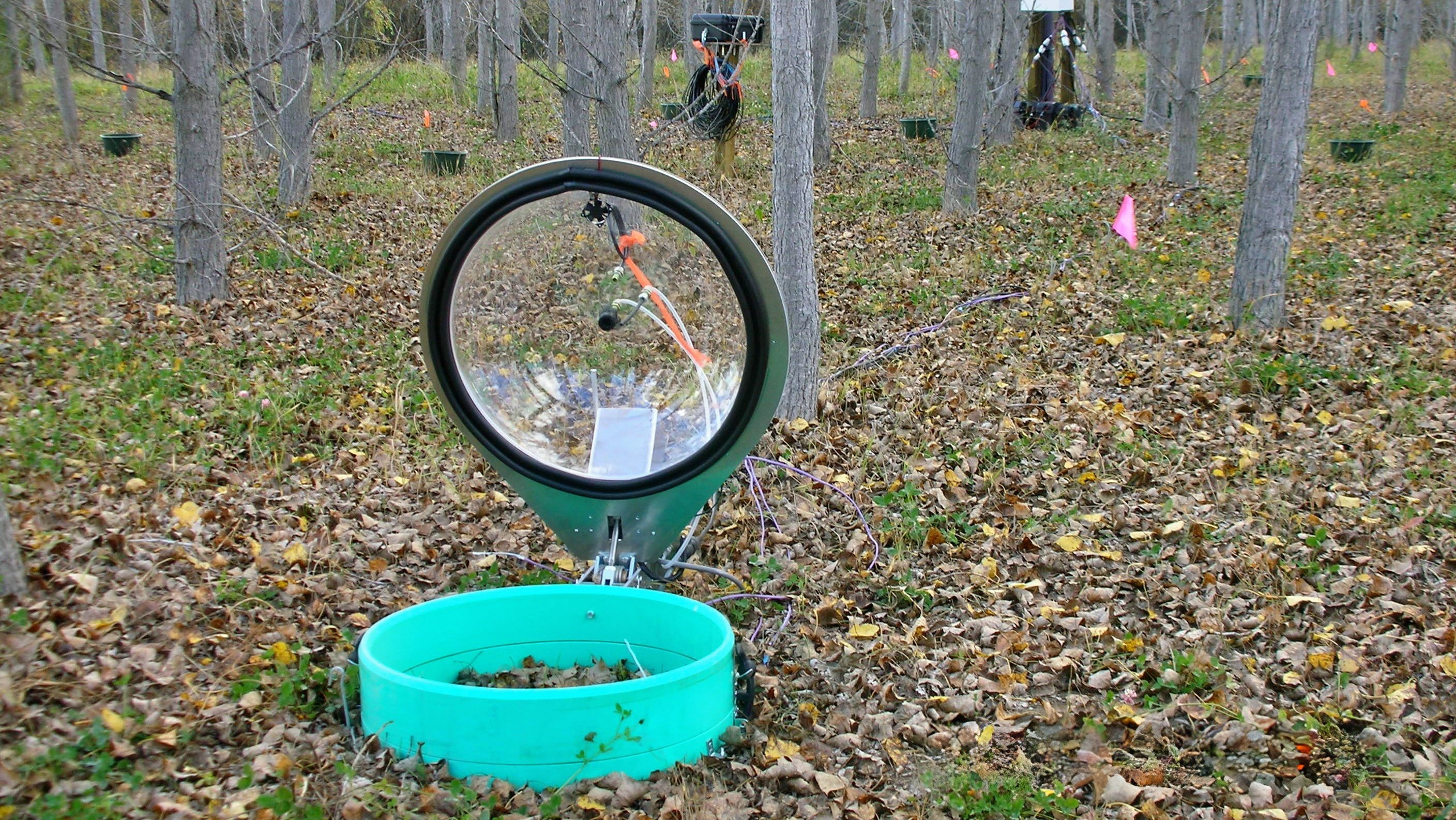
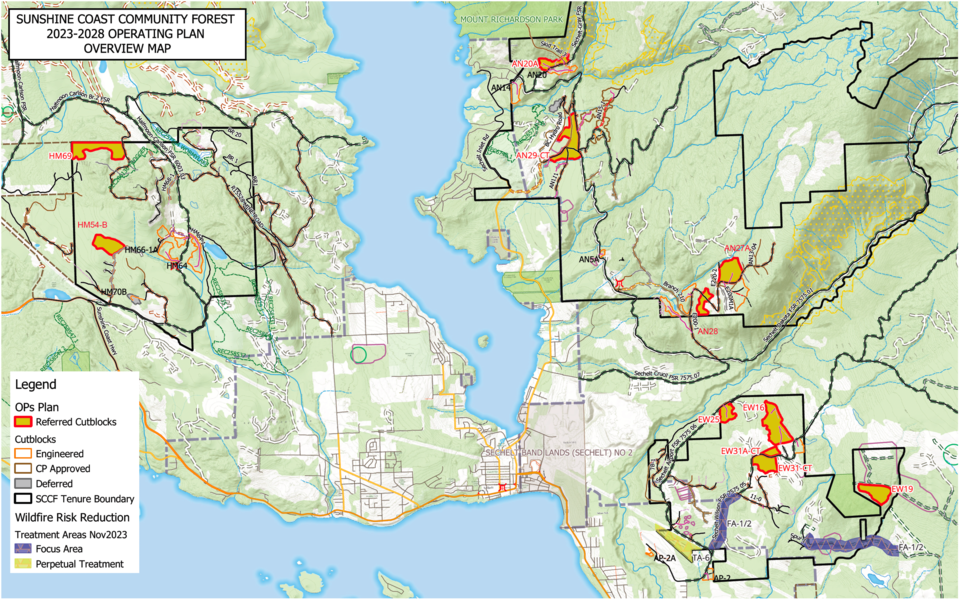

 Forestry workers, First Nations and mills are getting to work on Forest Enhancement Society of BC (FESBC)-supported projects that reduce wildfire risk, lower greenhouse gas emissions and provide recovered fibre to mills and bioenergy facilities. “Through a $50-million grant this year from the Province, FESBC and their project partners are making significant progress to enhance forest resiliency to wildfire and climate change,” said Bruce Ralston, Minister of Forests. FESBC-supported projects are often aimed at helping communities remove excess fibre from forests to reduce fuel for potential wildfires and provide raw materials for bio-products and bioenergy, helping B.C. reduce greenhouse gas emissions. …Fully funded by the Province, B.C. announced $50 million in January 2023 to help FESBC evaluate and fund projects. Of the 61 projects receiving grants from FESBC in 2023, nine are wildfire risk-reduction projects and 52 are fibre-recovery projects. Some serve both needs.
Forestry workers, First Nations and mills are getting to work on Forest Enhancement Society of BC (FESBC)-supported projects that reduce wildfire risk, lower greenhouse gas emissions and provide recovered fibre to mills and bioenergy facilities. “Through a $50-million grant this year from the Province, FESBC and their project partners are making significant progress to enhance forest resiliency to wildfire and climate change,” said Bruce Ralston, Minister of Forests. FESBC-supported projects are often aimed at helping communities remove excess fibre from forests to reduce fuel for potential wildfires and provide raw materials for bio-products and bioenergy, helping B.C. reduce greenhouse gas emissions. …Fully funded by the Province, B.C. announced $50 million in January 2023 to help FESBC evaluate and fund projects. Of the 61 projects receiving grants from FESBC in 2023, nine are wildfire risk-reduction projects and 52 are fibre-recovery projects. Some serve both needs. The Cowichan Valley’s Doman family has donated $50,000 to the BC Forest Discovery Centre to go towards a new building to commemorate the family’s long history in forestry on Vancouver Island. It will highlight the many achievements of the three Doman brothers — Gordon, Herb and Ted — who founded the Doman Lumber Company in 1955, and the family over the decades since then. Chris Gale, general manager of the BC Forest Discovery Centre, said the new building dedicated to the Domans will allow the centre to tell the story of the family the way it should be told. “The Domans’ contribution to the forest industry on Vancouver Island is gigantic,” he said. “A large lumber truck donated by the family will be located in the open end of the building and the rest will be dedicated to telling the story of the family. The family has supported us in all aspects of the centre’s operations.”
The Cowichan Valley’s Doman family has donated $50,000 to the BC Forest Discovery Centre to go towards a new building to commemorate the family’s long history in forestry on Vancouver Island. It will highlight the many achievements of the three Doman brothers — Gordon, Herb and Ted — who founded the Doman Lumber Company in 1955, and the family over the decades since then. Chris Gale, general manager of the BC Forest Discovery Centre, said the new building dedicated to the Domans will allow the centre to tell the story of the family the way it should be told. “The Domans’ contribution to the forest industry on Vancouver Island is gigantic,” he said. “A large lumber truck donated by the family will be located in the open end of the building and the rest will be dedicated to telling the story of the family. The family has supported us in all aspects of the centre’s operations.”
 The Forest Enhancement Society of BC is funding 61 projects in communities throughout BC in 2023 that include 19 projects, announced November 30, which are supported by funding from the Province of British Columbia. These projects will reduce wildfire risk, lower greenhouse gas emissions, and provide recovered fibre to mills and bioenergy facilities. “Improving utilization of wood fibre is a win for people and our forests,” emphasizes Gordon Murray, Executive Director, Wood Pellet Association of Canada. “These projects support the conversion of what was once considered waste into wood pellets, creating jobs, heating and powering Canadian homes and businesses, reducing wildfire risk, and contributing to global climate goals by displacing fossil fuels and advancing new technologies like bioenergy with carbon capture and storage.” Wood pellets play a key role in helping communities create robust, sustainable economies while addressing the challenges of balancing economic development with conservation and community values, with safety at the forefront.
The Forest Enhancement Society of BC is funding 61 projects in communities throughout BC in 2023 that include 19 projects, announced November 30, which are supported by funding from the Province of British Columbia. These projects will reduce wildfire risk, lower greenhouse gas emissions, and provide recovered fibre to mills and bioenergy facilities. “Improving utilization of wood fibre is a win for people and our forests,” emphasizes Gordon Murray, Executive Director, Wood Pellet Association of Canada. “These projects support the conversion of what was once considered waste into wood pellets, creating jobs, heating and powering Canadian homes and businesses, reducing wildfire risk, and contributing to global climate goals by displacing fossil fuels and advancing new technologies like bioenergy with carbon capture and storage.” Wood pellets play a key role in helping communities create robust, sustainable economies while addressing the challenges of balancing economic development with conservation and community values, with safety at the forefront. 